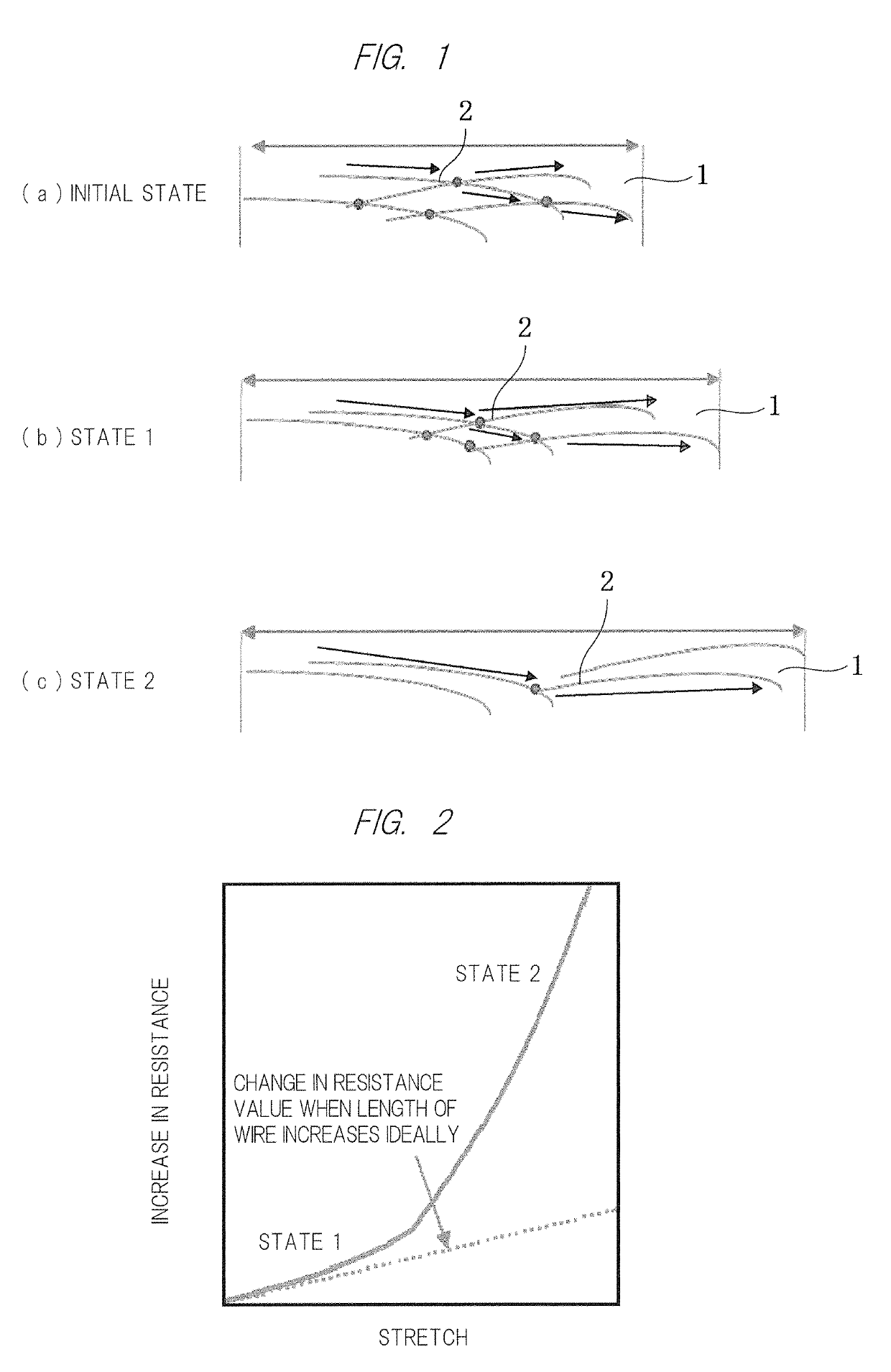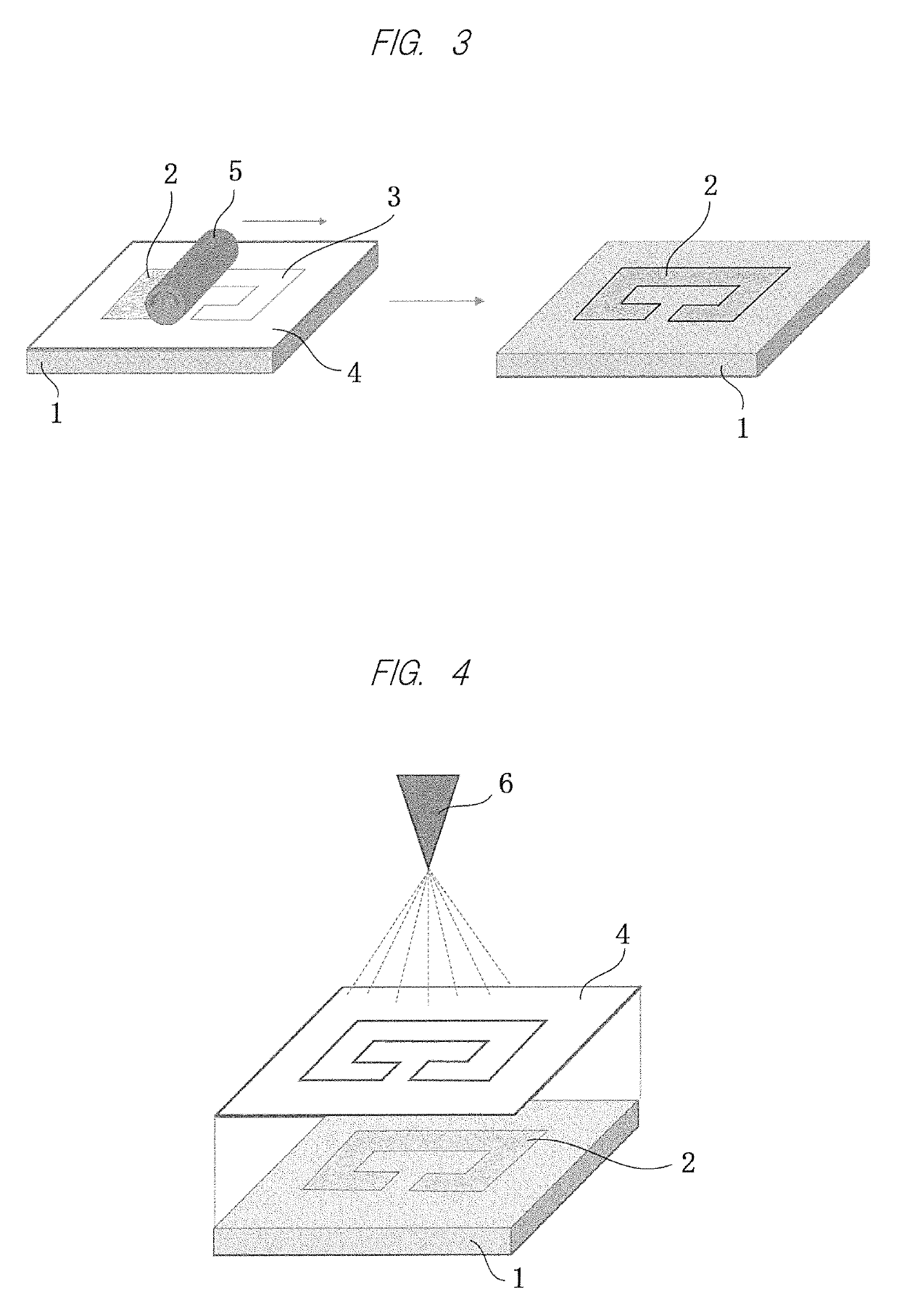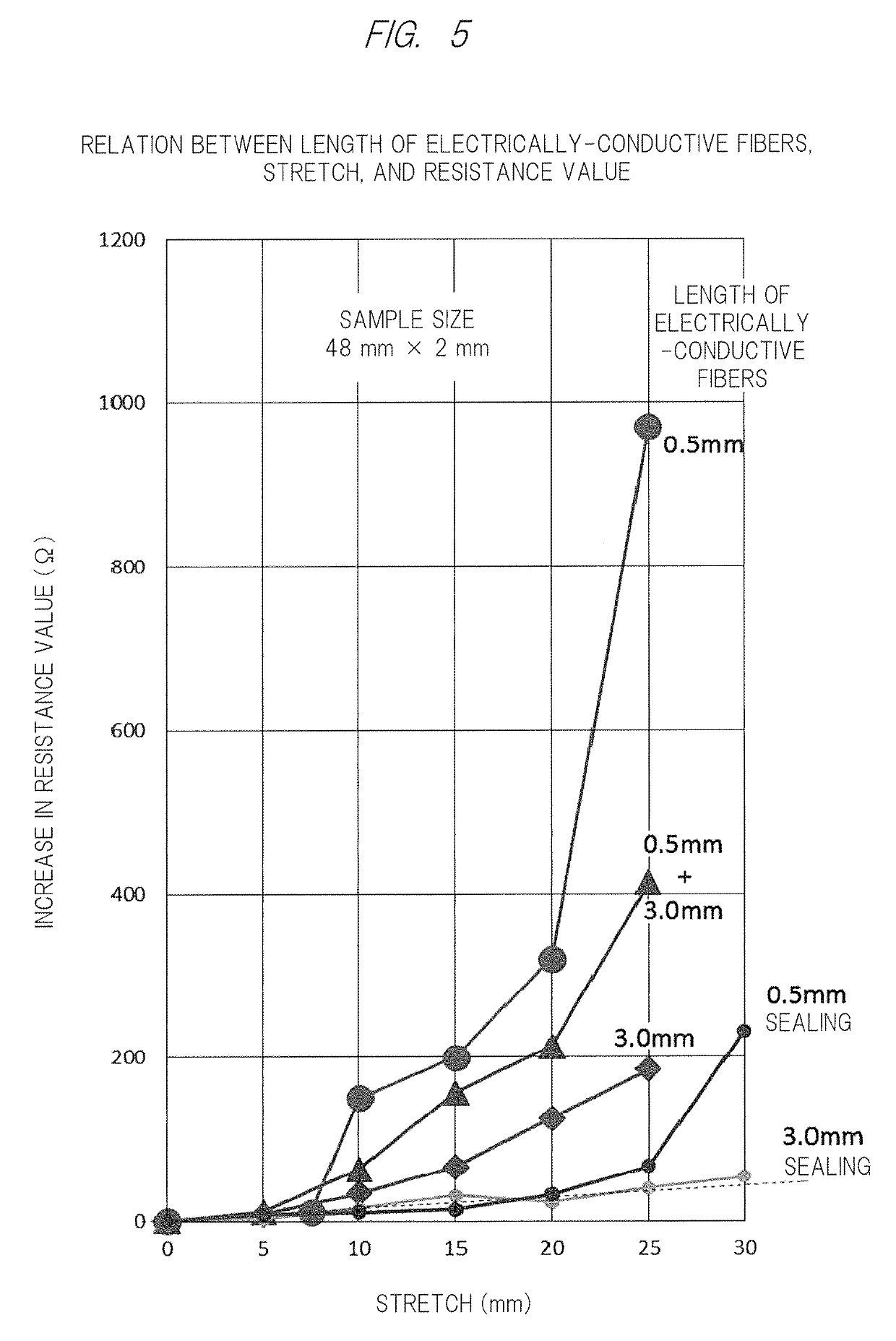Stretchable electrically-conductive circuit and manufacturing method therefor
a technology of electrically conductive circuits and stretchable sheets, applied in the direction of conductive layers on insulating supports, instruments, conductors, etc., can solve the problems of preventing the popularization of stretchable electrical conductors in sports science and medicine, complicated manufacturing process, and high final product cost, so as to improve the flexibility of elastomer sheets, improve the flexibility, and improve the effect of stretchability
- Summary
- Abstract
- Description
- Claims
- Application Information
AI Technical Summary
Benefits of technology
Problems solved by technology
Method used
Image
Examples
example 1
[0082]An adhesive layer was applied to the whole surface of an elastomer sheet (for example, a urethane elastomer sheet having a size of 3 cm×8 cm and a thickness of 1 mm) having predetermined flexibility. With viscosity appearing on the adhesive layer to some extent, silver-plated nylon fibers each having a length of 0.5 mm to 3 mm and a diameter of 17.6 μm were attached to the adhesive layer as the electrically-conductive fiber materials by the brush roller method. Sheet resistance of the stretchable electrically-conductive sheet was measured by a resistance meter. Actual measured results are indicated in FIG. 6.
[0083]There was a small change in sheet resistance up to a 250% stretch rate, which indicated a preferable characteristic.
example 2
[0084]Silver-plated nylon fibers (a fiber length of 0.3 mm to 3 mm, a fiber diameter of 17.6 μm) were adsorbed to an adhesive layer of an elastomer adhesive sheet (a size of 3 cm×8 cm, a thickness of 1 mm) by the brush roller spray method. The electrically-conductive sheet was brought into contact with an LED lighting circuit wire, and luminance of the LED was visually observed when a stretch rate was approximately 100%. Comparing to a case when the stretch rate was 0%, change in luminance was not observed.
example 3
[0085]An antenna pattern for UHF-RFID was formed by forming a mask in which PET was cut on an adhesive layer of an elastomer adhesive sheet (a size of 3 cm×9 cm, a thickness of 1 mm) and by adsorbing silver-plated nylon fibers (a fiber length of 0.3 mm to 3 mm, a fiber diameter of 17.6 μm) to the mask by the brush roller method. The antenna pattern was mounted with an IC chip for RFID conforming to EPC global gen2 to form a stretchable RFID tag. Attaching the stretchable RFID tag to clothing, a readout experiment was carried out by an RFID readout device (BHT-604QUWB made by DENSO WAVE Inc., at an output of 10 mW).
[0086]The ID could be read out within a communication distance of approximately 3 cm. Even when a stretch rate reached approximately 100%, the communication distance could be maintained within approximately 2.5 cm.
[0087]Note that, in Examples 1 to 3, there were no big differences among the experimental results even in a case of sticking the silver-plated nylon fibers by th...
PUM
| Property | Measurement | Unit |
|---|---|---|
| thickness | aaaaa | aaaaa |
| size | aaaaa | aaaaa |
| diameter | aaaaa | aaaaa |
Abstract
Description
Claims
Application Information
 Login to View More
Login to View More - R&D
- Intellectual Property
- Life Sciences
- Materials
- Tech Scout
- Unparalleled Data Quality
- Higher Quality Content
- 60% Fewer Hallucinations
Browse by: Latest US Patents, China's latest patents, Technical Efficacy Thesaurus, Application Domain, Technology Topic, Popular Technical Reports.
© 2025 PatSnap. All rights reserved.Legal|Privacy policy|Modern Slavery Act Transparency Statement|Sitemap|About US| Contact US: help@patsnap.com



